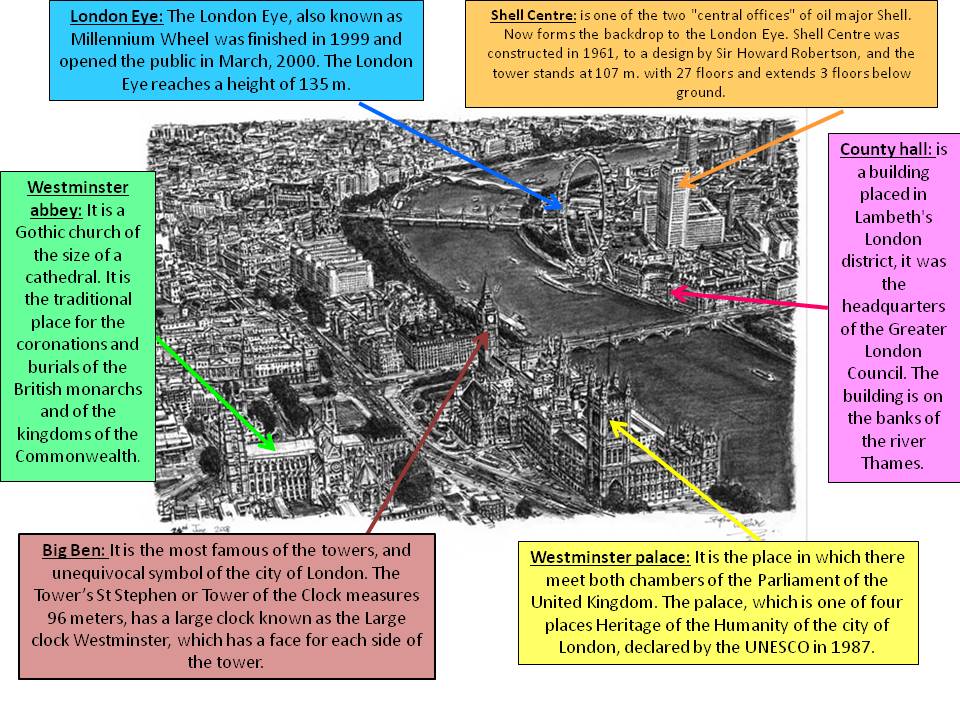This work of art belongs to the collection of Stephen Wiltshire. It represents two famous landmarks, The Big Ben and The London Eye, among other monuments. This painting is from 2008, as the date is written on the picture, “23-July-2008”. The painter is a British architect who has been diagnosed with autism; his signature is at the bottom right corner. He is well known for his ability to draw landscapes from memory after having seen them just once. He founded his own permanent art gallery in London’s Royal Opera Arcade, which is full of drawings and paintings depicting detailed city environments.
This drawing portrays the city of London with a great amount of details, near the two banks of the river. The south bank was occupied by suburbs dedicated to activities pursued by the law, such as gambling, prostitution or the theater. For many centuries, there was only one bridge that crossed the river and connected both parts of the city, formed by the City and Westminster. The most important monument in the surroundings is ‘The Big Ben’, a building that was completed on the 31st May 1859 as part of Charles Barry’s design for a new palace, after the old Palace of Westminster was destroyed by a fire. Although Barry was the chief architect of the Palace, Augustus Pugin designed the Clock Tower. On the other hand, the London Eye, also known as the Millennium Wheel, was finished in 1999 and opened to the public in March, 2000. Its construction was funded by British Airways. There are also other representative monuments in London such as Westminster Abbey and the palace of Westminster. In his painting you can see the central plan of London, which is considered to be the urban core, the heart of the city.
The urban layout is orthogonal, because London was constructed around the river Thames, and it still maintains its medieval limits. The new streets were planned in a regular way, directed towards the river Thames. However, the layout of the city was still irregular, especially in some neighborhoods where the route clashed with fixing barriers. In 1666, due to the great fire that destroyed four fifths of the city, London was reconstructed taking into account urban needs, and thanks to the work of the architect Christopher Wren the city was embellished. From this year onwards, the city became the center of English social life as it contained buildings like palaces, churches, monuments, theaters, and museums. With the exception of some important monuments, the buildings were homogenized in height. The industrialization was very important, since London became the largest urban agglomeration in the world at that time, and they built new bridges, expanding the industrial peripheries.
London is one of the main business centers in the world, as well as the former capital of the British Empire, which is one of the biggest global markets, similar to other markets like in New York, Tokyo or Paris. In this city, another important activity is tourism. The industry, the financial sector and the ports sustain the daily life of London. Over the years the industrial sector has declined and tourism has increased. The most important function of Trafalgar Square is tourism, due to the presence of historical monuments such as the National Gallery and Nelson’s Column, as well as having numerous embassies nearby.
Alicia de Miguel Utrera

